You might want to attach casters to plywood for a number of reasons. For example, you may want to create a movable shelf or cabinet that can be easily rolled from one location to another. This can be especially useful in a workshop or garage where you may need to move items around frequently.
Casters can also be useful for adding mobility to heavy pieces of furniture, such as dressers or bookcases, making it easier to rearrange your space.
It is important to use proper techniques when attaching casters to plywood to ensure that the casters are securely attached and able to support the weight of the plywood and any items placed on it.
If the casters are not attached properly, they may become loose or detach from the plywood, which could cause accidents or damage to your property.
Using the proper bolts, nuts, lock washers, and fender washers, and following the recommended torque specifications can help ensure that the casters are securely attached to the plywood.
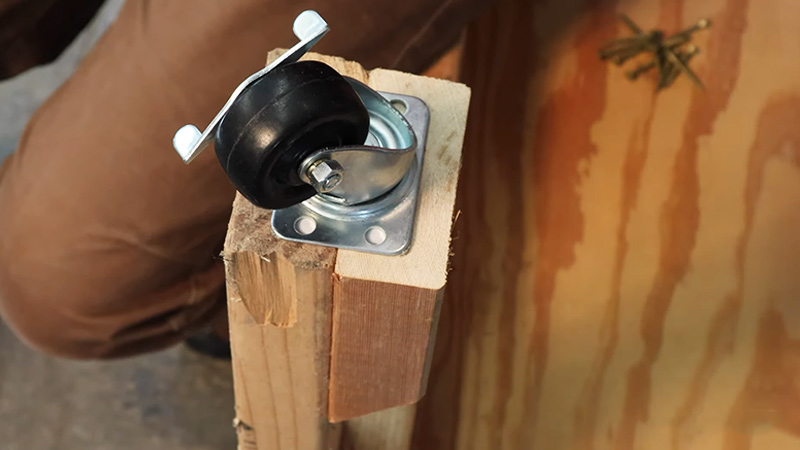
Materials Needed
To attach casters to plywood, you will need the following materials:
Plywood
You will need a sheet of plywood that is large enough to support the weight of the items you want to place on it, as well as the casters. Make sure to use a plywood thickness that is appropriate for your needs.
Casters
You will need casters that are rated to support the weight of the plywood and any items placed on it. Make sure to choose casters that have holes that align with the holes in the plywood.
Bolts, Nuts, Lock Washers, and Fender Washers
These will be used to secure the casters to the plywood. Make sure to use bolts that are long enough to go through both the casters and the plywood, as well as nuts and lock washers that are appropriate for the size of the bolts. Fender washers can be used inside to minimize crush.
Drill and Drill Bits
You will need a drill and drill bits to create pilot holes in the plywood for the bolts. Make sure to use a drill bit that is the same size as the bolts you will be using.
Wood Glue (Optional)
You may want to use wood glue to help secure the plywood to the bottom of the cabinet. This can help prevent the plywood from slipping or shifting when the cabinet is moved.
How to Attach Casters to Plywood? Step-by-step Instructions
Attaching casters to plywood is a straightforward process that can be accomplished with basic tools and materials. Follow these seven steps to securely attach casters to plywood:
Step 1: Gather Materials and Tools
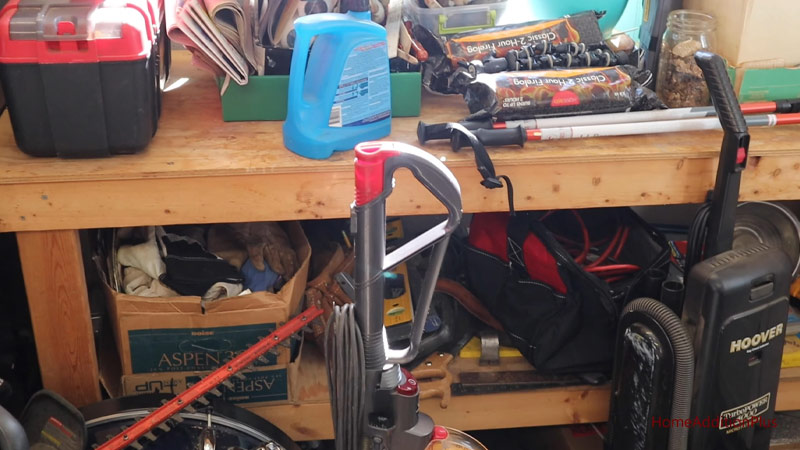
First you need to gather all the mentioned tools you get introduced to in the previous section. Make sure to get all of them.
Step 2: Measure and Mark
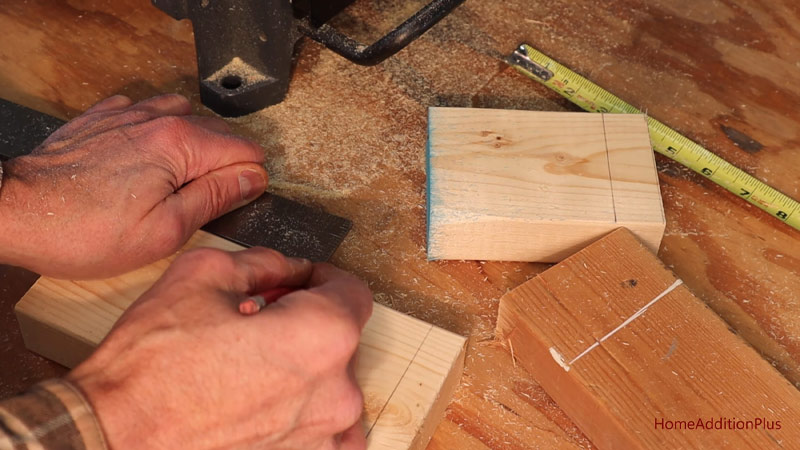
Determine the placement of the casters on the plywood. Measure and mark the desired positions using a measuring tape and pencil.
Ensure the marks are evenly spaced and aligned according to your project’s requirements. This step is crucial for maintaining balance and stability when the casters are attached.
Step 3: Pre-Drill Holes
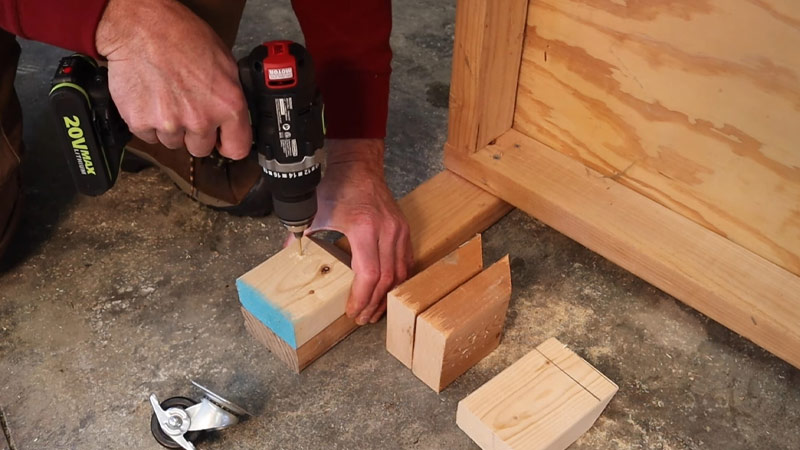
To prevent the plywood from splitting, pre-drill holes at the marked positions using a drill bit that matches the diameter of the caster screws.
Make sure the holes are slightly smaller than the screws to ensure a snug fit. This step is essential for a secure attachment and to maintain the integrity of the plywood.
Step 4: Attach Casters
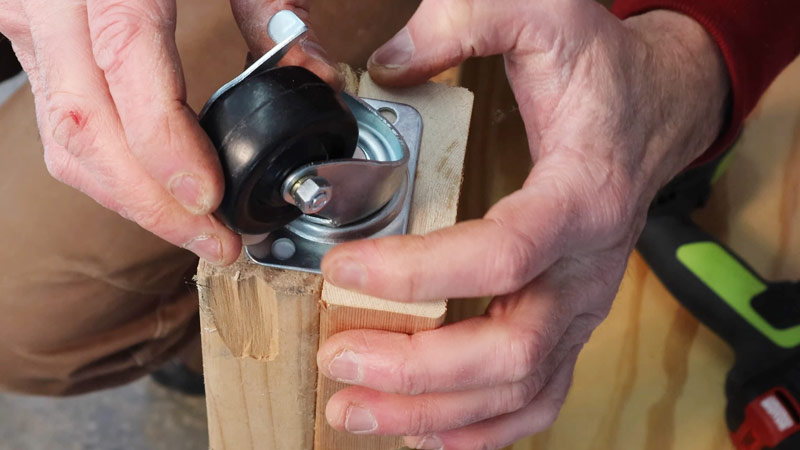
Align the holes on the casters with those on the plywood. Insert the caster screws through the holes in the casters and into the pre-drilled holes in the plywood.
Apply wood glue to the underside of the plywood, if desired. This can help prevent the plywood from slipping or shifting when the cabinet is moved.
Use a screwdriver to tighten the screws, ensuring that the casters are securely fastened. Repeat this process for all the casters.
Step 5: Check Alignment and Leveling
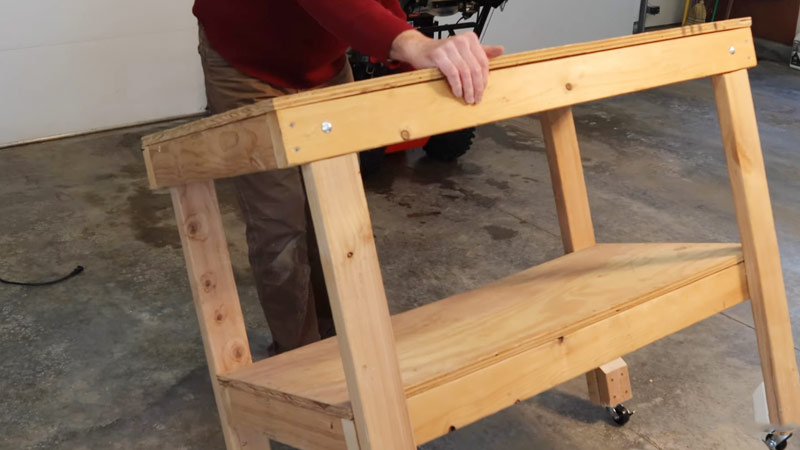
After attaching the casters, check the alignment and leveling of the plywood. Ensure that the casters are evenly distributed and that the plywood sits level on a flat surface.
Adjust the tightness of the screws if needed to achieve stability.
Step 6: Test Mobility
Before using the plywood for its intended purpose, test the mobility of the structure. Roll the plywood around to ensure that the casters move smoothly and that there are no wobbles or uneven movements.
This step is crucial for verifying the effectiveness of the caster attachment.
Step 7: Secure Loose Ends
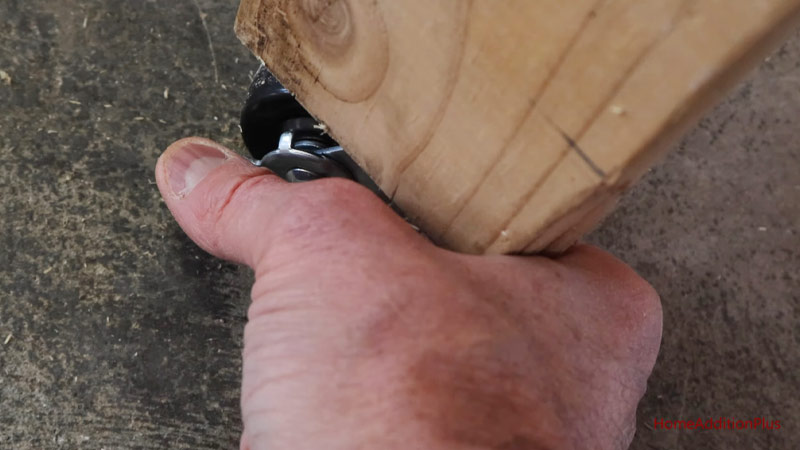
Inspect the casters and screws for any signs of looseness. If any screws are not securely tightened, use a screwdriver to address the issue.
Ensure that all casters are firmly attached and that there is no risk of them coming loose during use.
By following these seven steps, you can confidently attach casters to plywood, creating a mobile and versatile platform for various projects.
Tips Attach Casters to Plywood
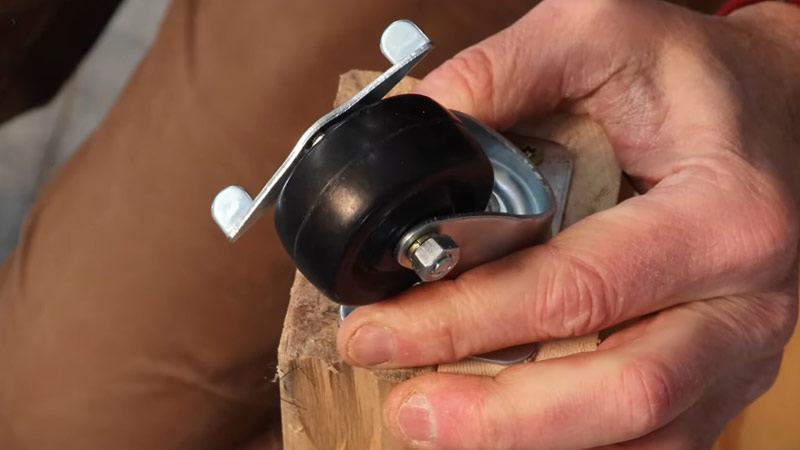
Just knowing how to attach casters to wood is not enough. When attaching casters to plywood, there are several tips to keep in mind to ensure a secure and effective installation:
Select Appropriate Casters
Choose casters that are suitable for your specific project. Consider factors such as the load capacity, type of surface the casters will roll on, and whether they need to swivel.
It’s important to use casters that can support the weight and provide the mobility required for your plywood structure.
Distribute Weight Evenly
Plan the placement of the casters to distribute the weight evenly across the plywood. This helps in maintaining stability and prevents one side from becoming heavier than the other.
Even weight distribution is particularly crucial when working with larger or heavier plywood panels.
Use the Right Size Screws
Ensure that the screws provided with the casters are the right size. Using screws that are too long may cause them to protrude through the plywood, while screws that are too short may not provide sufficient grip.
Ideally, the screws should be long enough to secure the casters firmly without going all the way through the plywood.
Pre-drill Holes
Always pre-drill holes for the screws to prevent the plywood from splitting. The diameter of the holes should match that of the screws.
Pre-drilling helps the screws go in smoothly and reduces the risk of damaging the plywood during installation.
Consider Locking Casters
If the plywood structure needs to stay stationary at times, consider using casters with locking mechanisms.
Locking casters allow you to immobilize the plywood when necessary, providing stability during activities such as cutting or assembly.
Check for Smooth Movement
After attaching the casters, test the mobility of the plywood. Ensure that the casters roll smoothly without any resistance.
If there are any issues, such as wobbling or uneven movement, recheck the attachment points and make any necessary adjustments.
Regularly Inspect and Tighten
Over time, screws may loosen due to movement and vibrations. Periodically inspect the casters and tighten any screws that may have become loose.
This maintenance step is essential for keeping the casters securely attached and maintaining the stability of the plywood structure.
Use Washers for Stability
Consider using washers between the caster and plywood surface. Washers can help distribute the load and provide additional stability by preventing the caster from sinking into the wood over time.
By following these tips, you can ensure a successful caster attachment to plywood, creating a stable and mobile platform for your projects.
Mistakes to Avoid While Attaching Casters to Wood
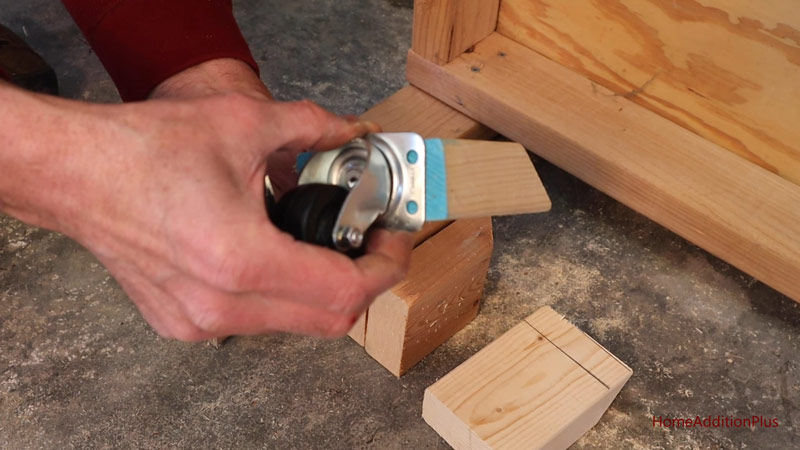
Avoiding common mistakes when attaching casters to plywood is crucial to ensure stability, durability, and overall safety. Here are five mistakes to steer clear of:
Using Incorrect Size or Type of Casters
One common mistake is selecting casters that are either too small or incapable of handling the load requirements. Ensure that the casters chosen are appropriate for the weight and size of the plywood structure.
Additionally, using the wrong type of casters for the intended surface (e.g., hard wheels on a soft floor) can lead to issues like difficulty in movement and premature wear.
Neglecting Even Weight Distribution
Failing to distribute the weight evenly across the casters is a critical mistake. Uneven weight distribution can lead to instability, making the plywood structure prone to tipping or wobbling.
Before attaching the casters, plan their placement to achieve a balanced weight distribution, especially for larger or heavier plywood panels.
Skipping Pre-Drilling Holes
Neglecting to pre-drill holes before attaching the casters is a common error that can result in plywood splitting or cracking.
Pre-drilling ensures a clean and secure attachment by allowing the screws to penetrate the plywood without causing damage.
Skipping this step increases the risk of structural weaknesses and compromises the overall integrity of the plywood.
Overlooking Locking Mechanisms
Forgetting to consider the need for locking casters is another mistake.
If the plywood structure is intended to stay stationary at times, omitting locking mechanisms can lead to unwanted movement and instability during critical tasks such as cutting or assembly.
Always assess the requirements of your project and choose casters with or without locking features accordingly.
Ignoring Regular Maintenance and Inspection
Once the casters are attached, neglecting regular maintenance and inspection is a significant mistake.
Over time, screws may loosen due to movement and vibrations. Ignoring this can lead to instability and compromise the safety of the plywood structure.
Periodically inspect the casters, tighten any loose screws, and address any issues promptly to ensure a stable and reliable platform.
By avoiding these common mistakes, you can enhance the longevity, performance, and safety of your plywood structure with attached casters.
Always prioritize careful planning, proper installation techniques, and ongoing maintenance to maximize the effectiveness of the caster attachment.
Materials and Tools Needed for Attaching Casters to Plywood
| Material or Tool | Description |
|---|---|
| Plywood | A sheet of plywood that is large enough to support the weight of the items you want to place on it, as well as the casters. Make sure to choose a plywood thickness that is appropriate for your needs. |
| Casters | Casters that are rated to support the weight of the plywood and any items placed on it. Make sure to choose casters that have holes that align with the holes in the plywood. |
| Bolts | Bolts that are long enough to go through both the casters and the plywood. Make sure to choose bolts that are appropriate for the size of the casters and the plywood. |
| Nuts | Nuts that are appropriate for the size of the bolts you are using. |
| Lock washers | Lock washers that are appropriate for the size of the bolts you are using. |
| Fender washers | Fender washers that can be used inside to minimize crush. |
| Drill | A drill that can be used to create pilot holes in the plywood for the bolts. |
| Drill bits | Drill bits that are the same size as the bolts you will be using |
FAQs
You can attach casters to most types of plywood, but it is important to choose a plywood thickness that is appropriate for your needs. Thinner plywood may not be strong enough to support the weight of the plywood and any items placed on it, while thicker plywood can be more expensive and may not be necessary for lighter loads. It is also important to choose a plywood that is smooth and free of knots or defects, as these can affect the stability of the plywood and the ability of the casters to roll smoothly.
Yes, you can attach casters to a finished piece of furniture. However, you will need to be careful to avoid damaging the finish on the piece. Make sure to use a drill bit that is slightly smaller than the bolts you will be using, and consider using wood plugs to cover the holes in the plywood after the casters are attached. You may also want to use furniture pads or coasters to protect the finish on the furniture and prevent it from scratching or damaging the floor.
While it is possible to use screws to attach the casters to the plywood, bolts are generally a better choice because they are stronger and more secure. Screws can strip or break under the weight of the plywood and any items placed on it, while bolts are more resistant to shear forces and can better distribute the weight of the plywood.
If you do decide to use screws, make sure to use screws that are long enough to go through both the casters and the plywood, and be prepared to replace them more frequently than you would with bolts.
Yes, you can use casters with brakes on your plywood shelf or cabinet. Casters with brakes can be especially useful if you need to keep the plywood stationary for long periods of time or if you are concerned about the stability of the plywood when it is loaded with heavy items.
To use casters with brakes, simply follow the same steps as you would when attaching regular casters, but make sure to choose casters that have the braking feature. Keep in mind that brakes can add extra weight and cost to the casters, and they may require more maintenance than regular casters.
Conclusion
Attaching casters to plywood can open up a world of possibilities for your DIY projects. Whether you’re a seasoned woodworker or just starting, this skill is essential for creating versatile and functional furniture and storage solutions.
Remember to choose the right casters for your specific needs, secure them properly to ensure stability, and perform regular maintenance to prolong their lifespan.
With the knowledge gained from this guide, you can confidently embark on projects that not only look great but also offer the convenience of mobility.
So, get ready to roll with ease and transform your plywood creations into practical, movable pieces that enhance your space.
Leave a Reply